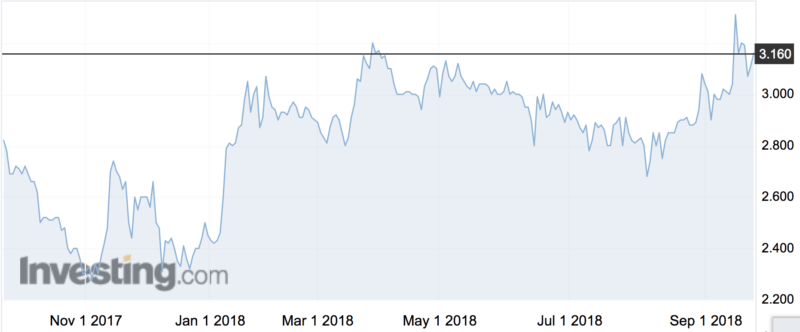‘We’ve been crying out’: could Australia’s new space plan launch a $12bn industry?

Pic: Yuichiro Chino / Moment via Getty Images
The ASX has only a handful of space stocks — but that might change if Australia’s new “space industry roadmap” succeeds in building a $12 billion industry by 2030.
Australia’s national CSIRO science agency on Monday launched a “Space Roadmap” to guide the government’s ambition to build a domestic space industry.
The report follows the establishment in July of the Australian Space Agency which has been handed $41 million over four years to drive the development of an Australian space industry.
The CSIRO space roadmap, launched at an Australia Space Research conference on the Gold Coast, focuses on three tactics:
— Harnessing Australia’s diverse industrial and research strengths to support space exploration and “deep space gateway habitats to safely conduct robotic and human missions”;
— Growin new businesses such as water management by building capabilities for observing Earth from space; and
— Taking advantage of Australia’s geographic position in the southern hemisphere to track objects in space and enable deep space communication
The space roadmap outlined “opportunities based on Australia’s natural advantages, and leveraging our established industries to repurpose for space – like new materials, mining to extract water, oxygen and inks to print spare parts, agriculture to grow food in inhospitable terrain, space object tracking, and space exploration and utilisation,” said CSIRO boss Dr Larry Marshall.
Fantastic to launch @CSIROnews 's Space Roadmap with @karenandrewsmp and @AusSpaceAgency 's Dr Megan Clark. Our roadmap charts a course for economic growth + champions space exploration to inspire our kids to use science to make the 'impossible' possible. https://t.co/WOTvFqbJIR pic.twitter.com/yXUJQ7VCvs
— Larry Marshall (@DrLarryMarshall) September 24, 2018
The CSIRO is even urging the global space industry to build an actual moon base and says it has plans to help establish mining and mineral processing operations in space.
The space agency would support 20,000 jobs, federal science minister Karen Andrews said at the report’s launch.
“Australia is ready to take bold new steps to grow its space sector, providing jobs now and into the future.
“From our factory floors to our farms a vibrant space industry will unlock opportunities and create jobs for all sorts of businesses,” she said.
Long overdue
Craig Smith, the chief of ASX-listed space and defence company Electro Optic Systems (ASX:EOS), told Stockhead the development of a domestic space industry was long overdue.
EOS is one of the ASX’s few genuine space stocks along with Sky and Space Global (ASX:SAS), makers of nanosatellites for telecommunications, and space surveillance company Kleos Space (ASX:KSS), which listed last month.
“We’ve been crying out for this for many, many years,” Mr Smith told Stockhead.
“It is great to have a focal point, a coordinating body that other agencies can come to.
“There wouldn’t be anyone in the Australian space industry who isn’t pleased to see it happen.”
Mr Smith said exploration projects like the Moon base were not the main focus of the space agency — instead the focus was on growing Australia’s piece of the space economy pie.
“We need to get back on par with some of the other countries,” he said.
“As we expand our commercial base and industry that will hopefully bring partnerships in some of the more challenging exploration projects, continue to bring jobs here over the coming decades and start to capture people’s imagination.”

For its part, EOS provides an array of services to the Australian space industry, from space debris and satellite tracking to powerful telescopes, research and satellite laser ranging.
The company released a market update today, telling investors that its new Learmonth space tracking facility in Western Australia was fully operational. That adds to another site in Canberra.
“We built the Learmonth site because we wanted to expand our coverage,” Mr Smith said. “Different sites gives you different sets of weather and different satellites to track.”
- Subscribe to our daily newsletter
- Bookmark this link forsmall cap news
- Join our small cap Facebook group
- Follow us on Facebook or Twitter
EOS stock rose five per cent today to an intraday high of $3.25, just short of its year-high of $3.35.
UNLOCK INSIGHTS
Discover the untold stories of emerging ASX stocks.
Daily news and expert analysis, it's free to subscribe.
By proceeding, you confirm you understand that we handle personal information in accordance with our Privacy Policy.








